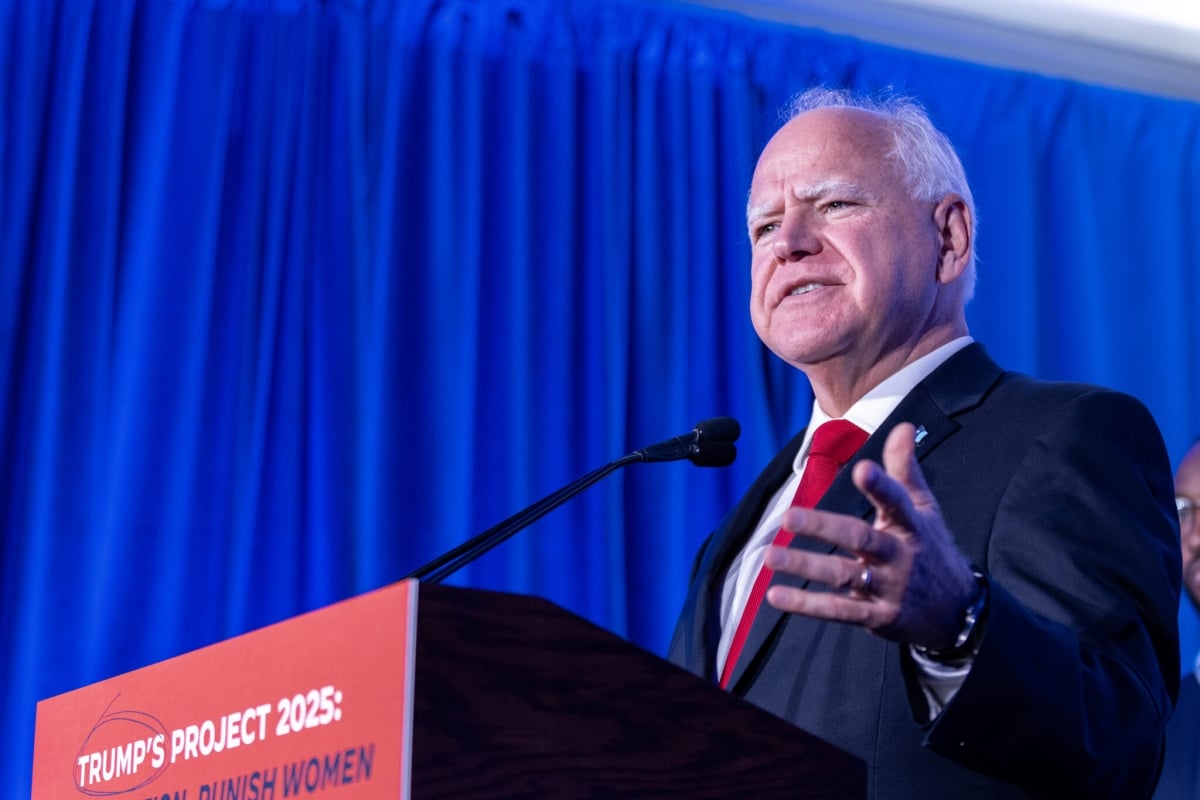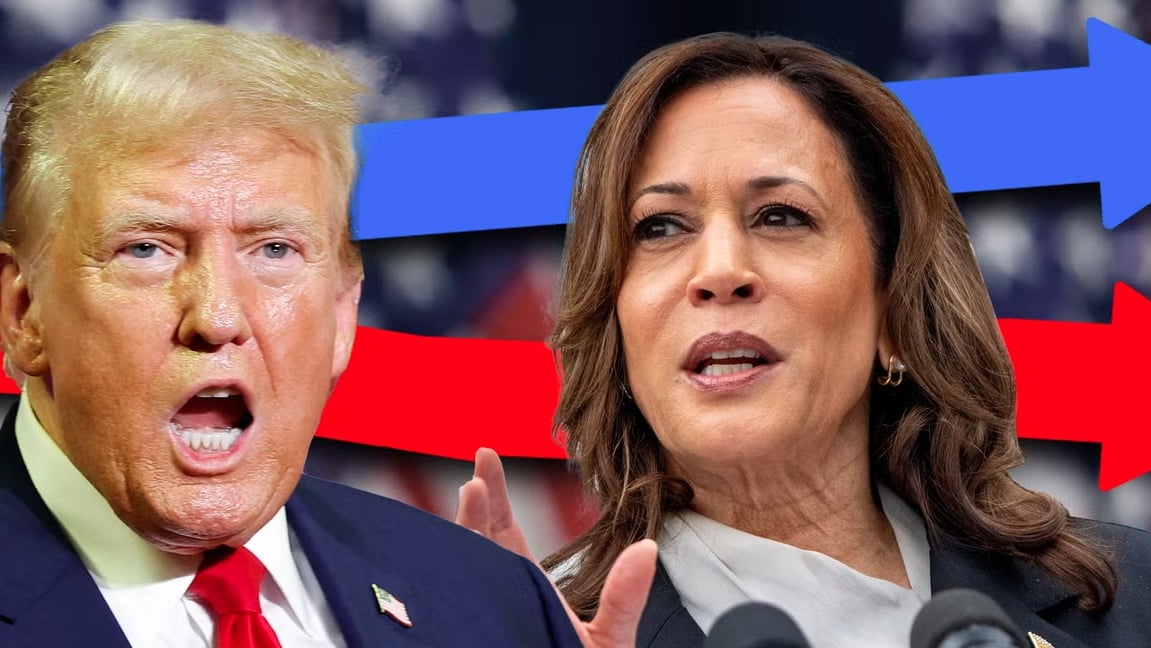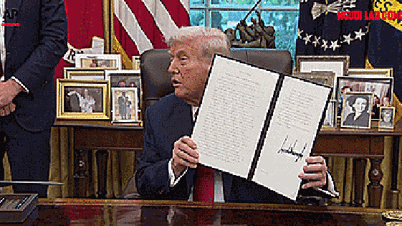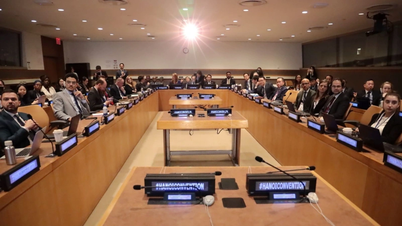Democrats are pushing their supporters to vote early to maximize Harris's early advantage, fearing Republican media hype and a potential "blue party" backlash on election day.
Vice President Harris and her supporters have been traveling across the country this week, focusing on key battleground states where early voting has already begun or is about to begin. Her running mate, Minnesota Governor Tim Walz, traveled to North Carolina on the first day of early voting there, while her husband, Doug Emhoff, was in Georgia urging voters to show up at the polls.

Surprisingly, the Republican Party has also made a similar move, despite the fact that presumptive nominee Donald Trump and many Republican candidates have previously criticized some early voting methods, including the widespread use of ballot drop boxes, for fear of voter fraud. The former President’s latest visit to Georgia on October 15 coincided with the start of early voting in the state. In a recent social media post, Mr. Trump also urged Arizonans to vote “immediately” the following week.
Although it has little impact on the race for the White House, early voting allows campaigns to track those who have already voted and focus on undecided voters, according to Julian Zelizer, a professor of history and public affairs at Princeton University. This helps both candidates increase their chances of winning in a tight race where the final result can be decided by just a few votes.
The Electoral College Problem
One of the reasons why the race for the White House is so unpredictable is the electoral college system. The presidential candidate who wins at least 270 electoral votes, or more than 50% of the 538 electoral votes, wins the presidency. In 48 states, the winner of a statewide election receives all of that state’s electoral votes. In Maine and Nebraska, the candidate with the most votes in each congressional district wins one electoral vote from that district, and a statewide victory earns that candidate two more electoral votes.
Neither Trump nor Harris currently has a clear advantage over their opponents based on state-level data. According to CNN's latest tally, Harris starts with 225 electoral votes in the swing states compared to Trump's 219. Ninety electoral votes from seven swing states (Arizona, Georgia, Michigan, Nevada, North Carolina, Wisconsin, Pennsylvania) and one electoral vote in Nebraska's 2nd District are still up for grabs.
For Kamala Harris, the shortest path to the Oval Office is to win the “blue wall” states: Michigan, Pennsylvania and Wisconsin. In case of losing in the Sun Belt (Arizona, Georgia, Nevada and North Carolina), the Vice President will be forced to detour through at least three of the five Great Lakes states, reach Nebraska’s 2nd District and win support from other states that voted for President Joe Biden in 2020.
Meanwhile, victories in three Eastern states – Pennsylvania, North Carolina and Georgia – are likely to bring Mr. Trump a second term in the White House. The President's campaign has also "locked" its targets on the three important battlegrounds mentioned above, with about a quarter of the $435 million in advertising spending for the entire campaign going to this region.
In particular, Pennsylvania – the most important swing state for both parties – is stuck in a statistical tie. The average poll of support in this battleground state with 19 electoral votes shows the gap between Mr. Trump and Ms. Harris is just under one percentage point. This is the closest gap ever seen between two major party candidates in the most important race in the United States in at least the past half-century.
Unpredictable signals from opinion polls
The tight race has been evident since the Vice President officially entered the race in early July. The Trump-Harris duo has never led their opponent in any of the above states by more than 5 percentage points - a gap large enough for observers to make a "credible prediction" about their chances of winning.
“Every time there is a good sign for Mr. Trump, there is another good sign for Ms. Harris. This reality makes me not really sure about the result, even though the election day is only about 2 weeks away,” commented American political writer Harry Enten of CNN.

Many Republicans say that the pre-election polls “don’t tell you anything.” In fact, in the 2016 US election, Donald Trump lost the popular vote to Hillary Clinton by 2.1 points, but won the electoral vote 304-227 thanks to narrow victories in many states. If history repeats itself, he will likely easily win with more than 300 electoral votes.
However, the risk of the former President losing the election comes from within the party itself, as there are still some Republicans who openly oppose Mr. Trump. According to the most recent New York Times/Siena College poll in Pennsylvania, the support rate of Democratic voters for Ms. Harris somewhat overwhelms the support rate of Republican voters for Mr. Trump, making this state more likely to be “dyed blue” on the election map this year.
Trump is courting Arab-American voters in Michigan who disagree with the Democratic Party's policies on the Gaza war. Harris, meanwhile, is focusing on white-collar, middle-class, and especially female voters. Overall, while not the most high-profile issue right now, reproductive rights are seen as a potential winner for the Democrats.
More than two-thirds of voters who are determined to vote in November believe this is the “most important election of their lives,” including 72% of Trump supporters and 70% of Harris supporters. Ironically, the one-third of undecided voters could decide the outcome of this year’s race.
Diep Thao/VOV.VN According to CNN, The Hill
Source: https://vov.vn/the-gioi/bo-phieu-som-da-bat-dau-ket-qua-bau-cu-tong-thong-my-2024-van-kho-doan-dinh-post1129863.vov



![[Photo] Prime Minister Pham Minh Chinh attends the World Congress of the International Federation of Freight Forwarders and Transport Associations - FIATA](https://vphoto.vietnam.vn/thumb/1200x675/vietnam/resource/IMAGE/2025/10/08/1759936077106_dsc-0434-jpg.webp)

![[Photo] Prime Minister Pham Minh Chinh inspects and directs the work of overcoming the consequences of floods after the storm in Thai Nguyen](https://vphoto.vietnam.vn/thumb/1200x675/vietnam/resource/IMAGE/2025/10/08/1759930075451_dsc-9441-jpg.webp)






























![[Photo] Closing of the 13th Conference of the 13th Party Central Committee](https://vphoto.vietnam.vn/thumb/1200x675/vietnam/resource/IMAGE/2025/10/08/1759893763535_ndo_br_a3-bnd-2504-jpg.webp)

































































Comment (0)